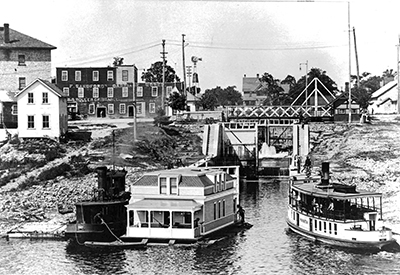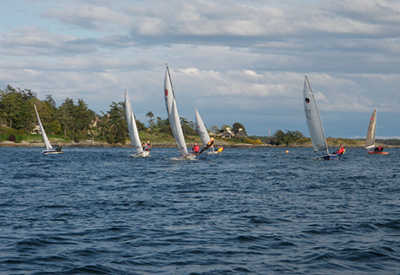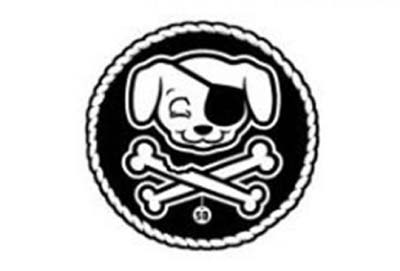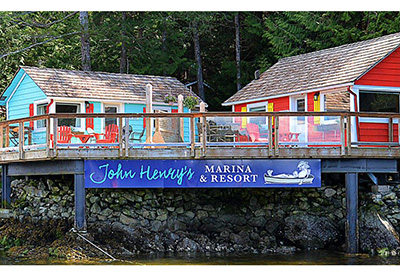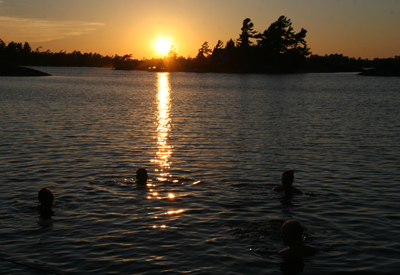Cruising Through History – Belgium’s Canals and Rivers
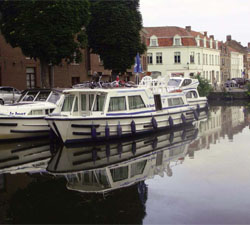
“Who wants to go first?” I do, so up I step up to the controls of our 34 ft. Le Boat cabin cruiser. A few minutes earlier, my two friends and I had been eyeing the cruiser eagerly and a touch anxiously from the safety of dry land. It’s our new home for the next week.
In the interests of full disclosure, I’m not a boater. Not from lack of interest, just lack of opportunity. But here was opportunity staring me in the face, in all its brilliant white expansiveness.
Gwen, a tanned, laid-back Belgian who shows newcomers the ropes, has already helped us stow our belongings, as well as three rental bikes. Next, he showed us the safety features, and took us on a tour of the boat: a spacious salon and galley, two cabins, two heads, and two sets of controls — one on the sun deck, where we are now standing. Looking beyond the controls, I see a bow that extends all the way into tomorrow.
We arrived at the Le Boat marina about 45 minutes earlier, our car full of suitcases and provisions, including single malt scotch and wine. The marina is just outside of Nieuwpoort, Belgium, a North Sea fishing community fast becoming a sailor’s haven. The Nieuwpoort Euromarina, a kilometer away, is Europe’s largest, offering 2,000 berths.
Belgium’s North Sea coast is little known among North Americans. Just across the water from England, the coast comprises 67 kilometres of pristine, tidewashed beaches. Between Belgium’s southern border with France and the northern border with the Netherlands are 14 waterfront communities, each with a different sensibility, all featuring boardwalks lined with outdoor cafés, restaurants and shops.
But we’re here for the canals, not the coast. Our tentative itinerary, planned after poring over a map — part of an information package sent to us in advance by Le Boat — includes Diksmuide, Ieper and glorious medieval Bruges. Maybe Veurne if we have time.
We’re anxious to set off. But first, the operating instructions. Gwen explains how to start the engines, work the throttle and shift from neutral into forward and reverse. It’s pretty basic.
With a quick turn of the key, the twin diesel engines thrum steadily. We cast off. Gwen, still at the controls, guides the boat down the waterway, past fishermen sitting on the banks in lawn chairs. They pay us no attention.
Gwen makes a three-point turn, reversing and accelerating as needed. Seems pretty straightforward, even when he tells me to take over. I repeat the three point turn for practice, and as we approach the marina Gwen says, “Take her in,” pointing vaguely towards I don’t know what.
I hear someone shrieking, and realize it’s me. I’m asking for clarification (“Where? Where?”), and at the same time choose to ignore Gwen and head for the berth we had left from, conveniently parallel to the waterway. Gwen shrugs. I pull in at a safe speed, Gwen jumps off, waves good-bye, and we’re on our own.
Despite my performance anxiety, we are ready. Gwen’s instructions were clear and easy to follow. Besides, the day before we had carefully reviewed a comprehensive instructional DVD in Le Boat’s information package.
Today’s destination: Diksmuide, on the Ijzer river. After navigating through several locks and lift bridges, we arrive three hours after leaving the Le Boat marina.
There’s been little boat traffic, which suits us fine. More time to take in the farmlands, the little towns in the distance with churches spiking the sky, and the water birds closer at hand that wait until the last moment before scurrying for cover among vegetation overhanging the banks.
Along the way, I’ve relinquished the controls to Mark. Stephanie declines a turn at the wheel. She’s been a steadying presence through the locks and lift bridges, having cruised through Ontario’s Rideau Canal system many times. However, she has no interest in taking over the helm.
“But don’t you want to, you know, tell your kids back home what you can do?”
“No,” she says. “That’s a guy thing.”
Once we dock at Diksmuide, we crack open the scotch. We are pleased with ourselves. We are masters of this boat. We head off for dinner, settling in at an outdoor café across the river from the Ijzer Tower. At 84 metres, the “Ijzertoren” is Europe’s tallest peace tower. The words “No More War” appear on it in four languages.
Although built after WWII, the tower memorializes the suffering and destruction of WWI. Early in the war, German troops crossed into Belgium heading for the North Sea. To slow them down, local Belgians opened sluice gates on the Ijzer, flooding the surrounding countryside and making the river a front line for the remainder of the war.
After dinner, we meander around town, arriving at the Grote Markt. Every Belgian town has a market square. The more prosperous the town’s history, the grander the square. We encounter a vast space, the centrepiece of which is a town hall. The style is 15th or 16th century Gothic, magnificently floodlit. More cafés line one side of the square. We’re tempted, but more so by our berths back on the boat. We head back, crawl into bed, and barely have time to note a gentle lapping of water against the hull before sinking into sleep.
Over breakfast the next morning, we debate whether to stay and sightsee, or go. We compromise.
Since we’re out of bread, we head off on our bikes in search of a “bakerij.” We find a grocery store instead, just off the market square. Once inside, we check out the product lines, admire a range of cheeses, grab a loaf of crusty bread, and head back to the boat.
Our next destination is Ieper, better known outside of Belgium by its French spelling, Ypres. We dock in mid-afternoon, allowing us time to walk around town. Ieper was one of Northern Europe’s most important cloth producing and trading cities during the high Middle Ages, from the 11th to 13th centuries. One glance at the ornate Cloth Hall in Ieper’s Grote Markt captures a sense of glories past. To our innocent eyes, it looks like a magnificent legislature, with rows of Gothic windows, a massive central belfry housing a 49-bell carillon, and twin towers at each end.
After walking and window shopping along a few of the narrow streets radiating out from the Grote Markt, we head back to the boat for dinner. It’s a short walk. As with Diksmuide, we’re docked on the edge of the town centre.
The next day breaks grey. Our plan is to cycle 10 km out of town to Tyne Cot, the world’s largest Commonwealth war cemetery. For the first time since our arrival in Belgium, we’re in countryside that is gently rolling, not flat. These, we realize, are the ridges over which German and Commonwealth troops fought so pointlessly for four years. Aside from road signs pointing to cemeteries in all directions, including Tyne Cot, the land looks rich and fertile.
Our perception of peaceful prosperity changes when we reach Tyne Cot. As we walk towards a visitor’s centre, we pass a directional sign. Out of it comes the disembodied voice of a young woman stating names and ages. As we stop to listen, the voice goes on without interruption. Inside the centre, the same voice, but here each name is accompanied by a photo on a screen. The faces of war casualties flicker and fade as their names are read out one by one.
We turn to look at the verdant countryside through an expanse of glass. Everything is green: waving grasses, fields, copses of trees. But below the window is a different sight. A map of the same surroundings, this time with wartime photos depicting the destruction caused by four years of artillery fire.
We’re looking at the site of the 100-day, 1917 Passchendaele offensive, in which tens of thousands of Commonwealth soldiers died. When the offensive was over, the front line had advanced a mere eight kilometers.
The photos and the view are irreconcilable, except for the same gentle rolling of the land.
We suddenly understand that everything we’ve seen in Diksmuide and Ieper – the fabulous market squares, the medieval buildings, the winding streets –are reconstructions. Both towns and all the neighbouring villages had been razed by artillery shells, then painstakingly rebuilt.
We walk silently through the cemetery, and under sombre grey skies cycle back to Ieper.
Tomorrow, we head for Bruges. We’ve passed on visiting Veurne. Bruges is more than a full day’s motoring from Ieper, and we’re on holiday. No rushing. Besides, what if we want to spend an extra day in Bruges?
We soak up sunshine along the way, gradually removing layers as the day progresses. I’m more relaxed than I’ve felt in years. No computers, no phone calls, no deadlines to set my stomach churning.
Now that we’re old hands at cruising, we wave confidently to other boaters and cyclists pedalling alongside our canal. As we approach Bruges, we enter the Gent-Ostende canal, which has a direct link to the sea. It’s the widest canal we’ve encountered, and for the first time freighter barges loom up behind us. We scuttle to the canal bank like the water birds before us, giving right of way to the working boats.
Bruges’s historic city centre, a UNESCO World Heritage site, is laced with canals. Again, we’re able to dock close to the city centre. I can’t wait to start walking.
Bruges achieved its commercial zenith in the Middle Ages, gradually declining until the early 20th century. This decline, or more precisely the lack of redevelopment due to decline, has helped preserve street after street of now-painstakingly preserved medieval architecture.
We happen to arrive on market day, a weekly occurrence in every Belgian community. Fruit, vegetable, cheese, meat and flower vendors all crowd into the Grote Markt. Dominating the square is another cloth hall, and its 83-metre high Belfry tower. Built in the 1200s, its vertiginous presence continues eight centuries later to symbolize Bruges’ glory and prestige.
We take a quick tour, and head back to the market. We’ve brought baskets to load up on roast chicken, roasted potatoes, greens, fresh fruit and, of course, cheeses. A perfect meal, no preparation required. Our last stop is Freddy Janssen’s Ham and Cheese Palace, essentially a cheese shop on wheels. The three of us crowd together, eyes wide. We select a blue cheese and a runny cheese, but a third? Freddy intervenes. “You like cheese,” he asks. We nod solemnly. ‘Try this.” He hands each of us a slim wedge of a firm, dark golden cheese. It has a warm, nutty flavour, slightly caramelized. We’re entranced. Freddy explains that it’s made by a local farmer who calls Freddy whenever another wheel has ripened. Back at the boat, we eat slim shards of it as an appetizer. Perfect with scotch or a dark Belgian beer.
After another two days, it’s time to head back to Nieuwpoort. On the way, Stephanie finally steps up to the wheel. I knew her competitive streak would win out, but judiciously keep my mouth shut.
I’m sorry the trip is ending. I feel spoiled, having had our very own floating hotel suite. Best of all, I can’t remember feeling more relaxed. I may not be ready to buy my own powerboat, but I can’t wait to pick out another Le Boat cruise. Maybe a two week cruise in France. Or Italy. Or the Netherlands.

